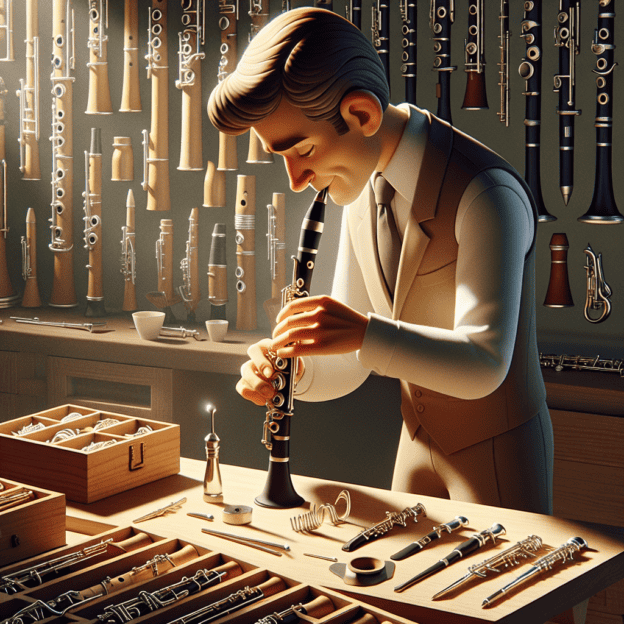The clarinet ligature may seem like a small piece of equipment, but it plays an immense role in your overall performance. In its simplest form, a ligature is the component that holds the reed onto the mouthpiece. However, its influence extends far beyond that basic function. In this post, we will explore the different types of ligatures, their impact on sound production, and how to choose the right one for your clarinet.
What is a Clarinet Ligature?
A clarinet ligature is designed to secure the reed in place on the mouthpiece. Made from various materials, ligatures come in multiple designs, each affecting sound production, comfort, and playability in distinct ways. While it might seem like a small accessory, the ligature can significantly alter the tone and response of the clarinet.
Types of Clarinet Ligatures
Understanding the types of ligatures available helps players make informed choices based on their style and preferences:
| Ligature Type | Material | Sound Characteristics | Best For |
|---|---|---|---|
| Metal Ligatures | Brass or other metals | Bright, focused tone | Professional players, various musical settings |
| Leather Ligatures | Leather | Warm, rich sound | Players seeking mellow tones |
| Fabric Ligatures | Cloth materials | Unique tonal quality, dampened vibrations | Players looking for distinctive sound color |
| Hybrid Ligatures | Combination of materials | Versatile sound | Players with varied playing styles |
Factors to Consider When Choosing a Ligature
When selecting a ligature, consider these important factors:
- Sound Preference: Think about the tonal qualities you desire. If you prefer a brighter, more projecting sound, a metal ligature might be the right choice. Conversely, if you want a warmer, richer tone, leather or fabric ligatures can provide that quality.
- Type of Reed: The reed you use can also influence your choice of ligature. Some ligatures work better with specific reed strengths and types. Experimenting with different combinations will help in finding the perfect match.
- Comfort and Fit: Ensure the ligature fits comfortably on your mouthpiece and securely holds the reed without excessive tension. An overly tight ligature can lead to discomfort and poor sound quality.
How to Properly Attach a Clarinet Ligature
Getting the ligature on the mouthpiece correctly is key to achieving optimal sound. Here's a step-by-step guide:
- Moisten Your Reed: Before attaching the ligature, moisten the reed. This can be done with a bit of water for optimal performance.
- Place the Reed: Align the reed directly on the mouthpiece. Ensure the reed covers the tip perfectly for best vibration.
- Position the Ligature: Slide the ligature over the reed and mouthpiece, usually around one-third of the way down the reed. Make sure it's straight and not tilted.
- Tighten the Ligature: Gently tighten the ligature, making sure it holds the reed firmly but is not overly tight. You want to allow some flexibility to let the reed vibrate freely.
Maintenance Tips for Ligatures
To ensure your ligature maintains its performance over time, follow these maintenance tips:
- Regular Cleaning: After every use, wipe down the ligature to remove moisture and debris. This will help prolong its life and functionality.
- Inspect for Wear: Regularly check your ligature for signs of wear or damage. It's essential to replace any defective components to maintain sound quality.
- Store Properly: Always store your ligature in a safe place when not in use. Keeping it in a protective case can help prevent damage during transport.
The Role of Quality in Performance
Quality in a ligature can have a significant effect on the final sound. High-quality ligatures from reputable brands are crafted with care, enhancing the natural qualities of your instrument and reed. Investing in a well-made ligature can improve your overall playing experience and help you achieve the sound you're after.
It's worth noting that ligatures, like clarinets, can perform differently based on various factors, including the player's technique and style. That's why it's crucial to choose a ligature that complements your unique approach to playing.
Using the right ligature can help you achieve better sound production and make your performances smoother. Understanding how the ligature works with your clarinet can open up new possibilities for expression and creativity in your music.
As you grow as a clarinetist, don't be afraid to try out different ligatures and find the one that suits your style best. Learning to fine-tune your setup can make a big difference in how you sound and how comfortable you feel while playing.







